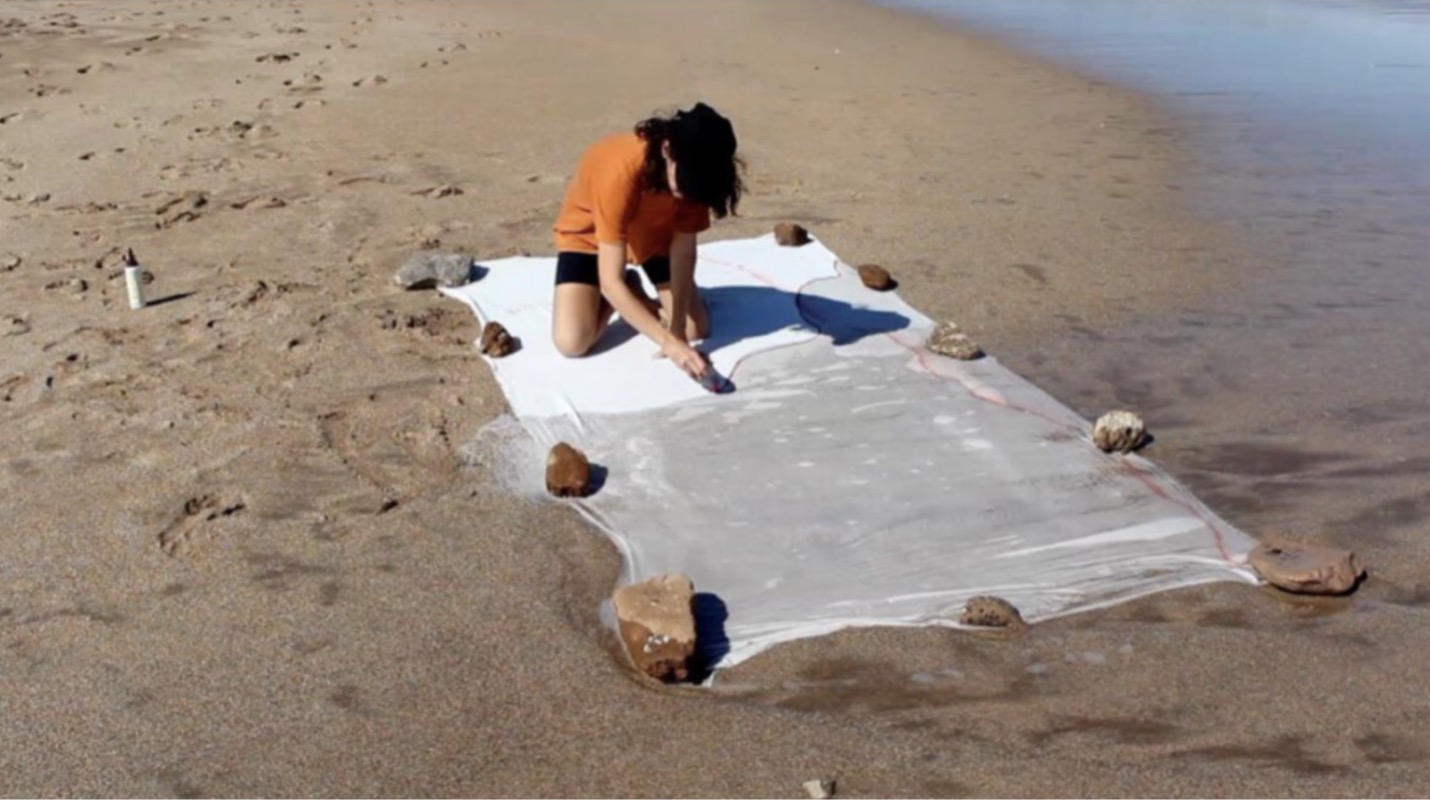This story is part of a series of articles about “museum speak,” or the lingo of those who work in museums, as well as museum-related knowledge. It is intended to deepen your understanding of the behind-the-scenes workings of a museum, and in particular the operations of the Harvard Art Museums.
It took a handful of microfiber cloths and one paintbrush—plus two large lifts—to complete one of the most critical tasks in caring for Carlos Amorales’s Triangle Constellation (2015): dusting. About a year and a half after it was installed above the Harvard Art Museums’ Calderwood Courtyard, and during a day when the museums were closed to the public, the 556-pound sculpture received its first cleaning.
“Dust is unsightly, and it attracts moisture and pests,” said Angela Chang, assistant director of the Straus Center for Conservation and Technical Studies and conservator of objects and sculpture. “It can get harder to remove over time,” which is why it was important to dust Triangle Constellation so thoroughly.
Using a scissor lift to access the smallest and lowest parts of the sculpture, Chang and objects conservation fellow Elizabeth LaDuc gently wiped each triangle and arms with a microfiber cloth, using a small brush to clean the ropes that hold the triangles. The larger triangles, dangling from a greater height, were cleaned in a similar manner by maintenance technicians Paul Correia and Dennis Lesse, who needed to use a large, red spider lift to reach them. For areas just out of reach, they used a fluffy red feather duster on a pole. The entire project took about half a day.
Dust: The Facts
It might surprise visitors to learn that something as mundane as dusting is part of museum work, but it’s actually a fundamental aspect of caring for the works of art on display.
Dusting in a museum involves more than the basic feather duster that you might use at home. Conservators and collections management staff use specialized tools and equipment, relying on regimented cleaning schedules. The way in which dusting is done matters, too.
“There is always risk involved in touching objects, so the tools, the technique, and a watchful eye are critical,” Chang said. “The condition of an object’s surface needs to be stable,” Chang said.
Once a week, collections management staff members dust most objects on view in the Collection Galleries, Special Exhibitions Gallery, and public areas such as the courtyard. Using soft Chinese brushes, the staff push fine particles into a receiving vacuum—which means they’re “not just moving the dust around, but actually removing it,” said Karen Gausch, the museums’ manager of exhibition production and collections care. Preventing dust from re-circulating and re-depositing helps promote a clean, healthy indoor climate.
Challenging Surfaces
Certain works that have tricky surfaces are dusted only by conservators. For example, conservators clean László Moholy-Nagy’s Light Prop for an Electric Stage (Light Space Modulator) (1930) because the work is so fragile and intricate. They also dust Louise Nevelson’s painted wood sculpture Total Totality II (1959–68), which is full of unusual angles and architectural shapes.
Doris Salcedo’s A Flor de Piel (currently part of the special exhibition Doris Salcedo: The Materiality of Mourning) also has special cleaning needs. Its surface of hand-sewn rose petals is so delicate it could be damaged by direct contact. To avoid this, museums staff run an air purifier in the gallery nightly, which reduces dust that might settle on the work.
Dusting is necessary in Adolphus Busch Hall as well. The building receives its most thorough dustings twice per year, in December and June. A handful of collections care staff and conservators carefully remove dust from the hall’s famed reproductions of medieval and Renaissance sculptures and architectural stonework.
While it may not be anybody’s favorite task, dusting enhances the museum experience for everybody, from visitors to curators and conservators. And every once in a while—especially when it involves a massive, mobile contemporary sculpture and heavy-duty power equipment—dusting can even provide some entertainment.




